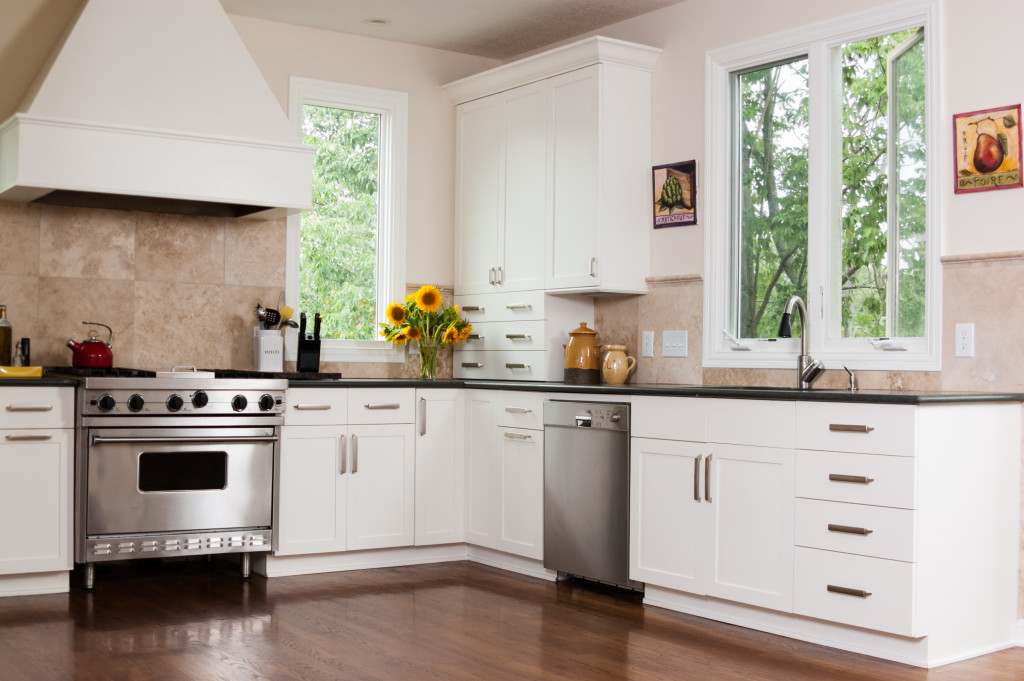Starting a food business can be an exciting adventure but also daunting, especially if you’re starting from scratch in your home kitchen. Before you start, ensure you have everything you need to set up a successful and safe working space. You want your kitchen to be able to accommodate all of your cooking and baking needs, as well as any food storage requirements. Here are a few tips to get you started.
1. Choose the right location.
When selecting a location for your kitchen, keep in mind the traffic flow in your home and any potential health and safety concerns. You’ll need enough space to move around comfortably and easy access to food preparation areas, cookware, and storage. If you have young children, you may want to choose a location that’s out of the way to avoid accidents.
Some other things to consider when choosing a location for your kitchen studio:
- Is there adequate ventilation?
- Are there any potential hazards, such as water lines or electrical outlets, that need to be addressed?
- Is the floor level and sturdy enough to support heavy equipment?
These things may seem like minor details, but they can make a big difference in your kitchen studio’s overall function and safety. You don’t want to worry about tripping over cords or dealing with a dangerous situation while trying to cook.
2. Invest in quality equipment.
Your kitchen studio is only as good as the equipment you put in it. When selecting commercial cooking stations, ovens, and other large appliances, make sure to choose durable items that fit your food business’s specific needs. It’s also essential to have the right smaller items on hand, such as mixers, food processors, and storage containers.
Depending on the type of food business you’re starting, you may also need specialized equipment, such as a pasta maker or a dehydrator. It’s essential to research and select the right tools for your particular business needs. Find the equipment that’s easy to use and will help you produce the best possible product.
It would be best if you also considered your kitchen layout when selecting equipment. For example, you might want to choose an oven that’s visible to customers if you’re planning on starting a bakery. On the other hand, if you’re opening a catering business, you might want to choose appliances that can be easily concealed when not in use.

3. Create a storage plan.
An organized kitchen is productive, so it’s essential to have a plan for storing all of your ingredients, cookware, and equipment. If you don’t have a lot of space, get creative with your storage solutions. Hang pots and pans from a pot rack, or use wall-mounted shelves to store spices and other small items.
Be sure to leave enough space in your storage area for food preparation. You don’t want to move things around whenever you need to use them. And, if possible, create a dedicated storage area for your raw ingredients. Contamination is a serious concern in any food business, so keeping your food storage area clean and organized is essential.
4. Keep it clean
Of course, cleanliness is vital in any kitchen, but it’s imperative in a commercial setting. You’ll need to develop a routine that ensures all your surfaces are sanitized, and your equipment is properly cleaned. This will help you avoid potential health hazards and ensure that your food tastes its best.
Some cooks also prefer to use separate utensils and cookware for raw ingredients and finished products. This helps to prevent cross-contamination and makes the cleaning process a bit easier. You’ll need to decide what works best for your particular business.
5. Consider your workflow
When designing your kitchen studio, it’s crucial to think about the flow of your work. You’ll want to create a comfortable and efficient space to work in. For example, you might want to choose a layout that allows you to move quickly between the different kitchen areas. This helps prevent accidents and ensures that you can work quickly and efficiently.
It’s also important to consider the layout of your equipment. You’ll want to ensure everything is within easy reach, so you don’t have to waste time walking back and forth across the kitchen. And, if possible, you’ll want to choose a layout that allows you to work in a continuous line. You want to move from one task to the next without backtracking.
Creating a kitchen studio for your food business is a great way to ensure you have the space and equipment to produce high-quality food. Following these tips, you can create a functional and stylish kitchen to help your business succeed. With a bit of planning, you can create a kitchen that’s perfect for your needs.

